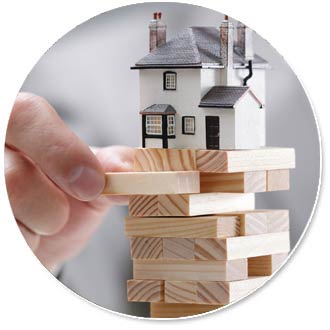 In the process of designing a custom home, you might work with an architect to draw up plans and a builder to execute them, find land and apply for a loan, all before the foundation is set. While you believe you’ll be getting the home of your dreams, all parties involved often have common concerns.
In the process of designing a custom home, you might work with an architect to draw up plans and a builder to execute them, find land and apply for a loan, all before the foundation is set. While you believe you’ll be getting the home of your dreams, all parties involved often have common concerns.
The Time Involved
Creating a custom home is unlike buying a property constructed years ago. Once building begins, it takes about six months until you can officially move in. If you’re working with a timeline for a new job, school or living situation, you need to factor in this time accordingly.
As the property gets closer to completion, realize that the builders often have other commitments and are working on their own schedule. As such, if a company tells you that they can build it in far less time, their team might be cutting corners, using leftover materials for instance. Generally, due to the complexity, custom building schedules can go at a slower pace.
The Costs Involved
As you build your dream home, understand that, unlike simply purchasing a property, several costs need to be factored in:
- Working with an architect to put together blueprints. This step can cost thousands alone.
- Costs for custom building materials. The rarer they are, the higher the expense. Also, realize you’ll also be paying for any shipping.
- The labor involved in constructing the property.
- The costs for appliances, cabinets, bathroom fixtures and flooring.
- Payments for a construction and mortgage combination loan.
As such, compromises become necessary to stay within your budget. You might want to cut specific materials and features or work with your architect and builder to reduce the overall square footage.
Poor Construction
After the house is built, you may notice the following signs of poor construction:
- Incorrect routing for heating and cooling systems
- Strange angles at corners
- Doors that can’t open all the way
- A property that’s not up to building standards
- Cheap materials
Unfortunately, many homeowners don’t notice these issues until later. A building not up to standard, with poorly routed pipes and ducts, may begin to collect moisture. In turn, this leads to rotting wood and mold that might not be noticed until years down the road. Then, the homeowner must pay a high cost to repair the problem.
On the other hand, builders and architects often find that the future homeowner isn’t knowledgeable about building custom homes. Ideas get scribbled down on paper, personal drawings get the project started or the homeowner tries to translate ideas from memory to a builder. Instead, it’s a good idea to give your project some logic, cohesion and organization from the get-go.
To start creating your custom home, work with By Carrier. To learn more about what our properties feature, contact us today.






